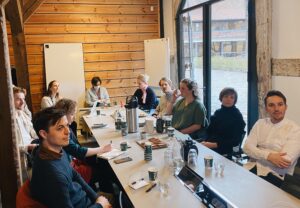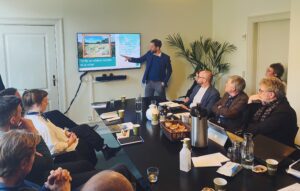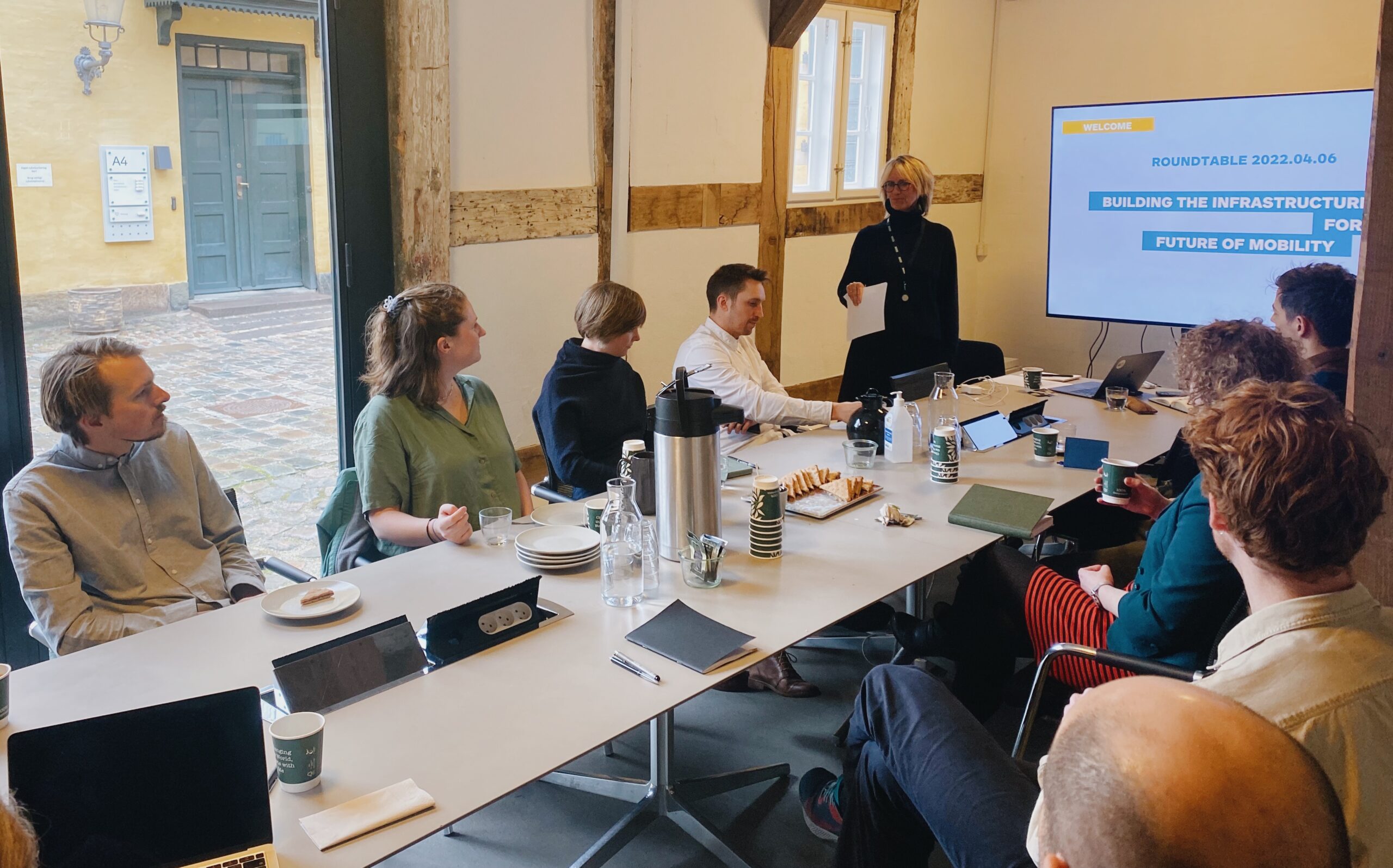This spring we have hosted a series of roundtable discussions on subjects varying from blue biodiversity in urban development, mobility, and the changing demographic of our cities.
During the lockdowns of Covid-19, we developed and hosted virtual roundtables to ensure a continued connection and dialogue between our members, and since then we’ve continued to take on various challenges in this informal setting.
This past month, we have hosted no less than three different roundtables. The themes vary from mobility to blue biodiversity in urban development and the changing demographic of cities, but they share a common focus on the future: What solutions can we implement today to better face the challenges of tomorrow?
Urban Mobility of the Future
On April 6 we hosted a roundtable on the theme of the future of urban mobility and infrastructure. What should infrastructure look like if we want to push or nudge the sustainable mobility agenda?
Following presentations from JAJA Architects and Tryg, the participants discussed how mobility is also a question of space and how we use it. If there weren’t so many cars in the city, we might make room for more green areas, social spaces, or infrastructure for more sustainable modes of transportation. We need to shift the way we think about ownership and transportation – what would the future look like, if we plan for people to share instead of owning cars for example?

Participants also discussed the importance of communication, local anchoring, use of data, legislation, and what private actors can do on their own when it comes to planning for the future of mobility. They also touched upon subjects of health and phycology – mobility isn’t just about cars and roads, it’s about our shared collective spaces, how we want to use them, and how we can make change feel comfortable.
Besides JAJA and Tryg, the roundtable was joined by EIT Urban Mobility, Realdania, COBE arkitekter, Voi, European Green Cities, Aalborg University, Holo, and Urban Agency.
Blue Cities and Biodiversity
The ports of Denmark have become attractive investment objects, and we see extensive changes happening with a great pace in how the ports are developed, look, and how they are used. Unfortunately, this isn’t always to the benefit of the sea and the life in it.
We need new ideas on how the interaction between the planning and the specific buildings and construction projects can ensure the synergy between land and water – new ideas on how we can accommodate biodiversity at sea.
At the roundtable “Blue Biodiversity and Sustainable Urban Development”, held on March 24, participants discussed possible solutions, legal barriers, our relationship with nature and the sea, ownership, outdated ways of thinking, and visions for the future, based on presentations from Habitats and Bygherreforeningen, both authors to a recently published guideline on the subject.

Besides Habitats and Bygherreforeningen, the roundtable was joined by people from Realdania, Urban Agenda, Copenhagen Institute for Future Studies, Copenhagen Windows, Schønherr, CONCITO, Danske Regioner, and Smith Innovation.
Cities for a Changing Demographic
In 2021, Carlsbergfondet launched the initiative “Vision 2050” – a vision for the Danish society in 2050. One of the core areas that the initiative outlines, is the changing demographics of our cities. In the future, our cities will hold a larger senior population. So how can we ensure the development of cities that matches the needs of their inhabitants?
Based on a presentation on “Vision 2050” by Copenhagen Institute for Future Studies, this roundtable held on March 17, set out to investigate that question. The discussion flowed from creating mixed cities for people of different ages and backgrounds, ensuring good neighborhoods with proximity between relevant facilities, and making urban spaces where older people would be an asset, not a burden.
But the question was also raised, whether cities aren’t already mostly for the older population, since older generations have a larger share of the wealth, and it can be expensive to enjoy the different pleasures and possibilities of city life.
Besides Copenhagen Institute of Future Studies, the roundtable was joined by people from Juul Frost Arkitekter, DGI, Arup, Almenr, Arkitema, and Copenhagen Windows.
If you want to know more about our Urban Partnership roundtables, please reach out to Program Director, Lotte C. Breengaard.







